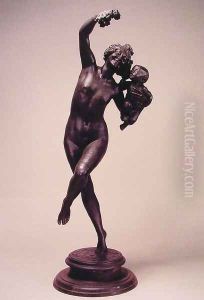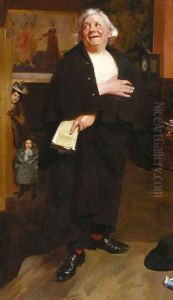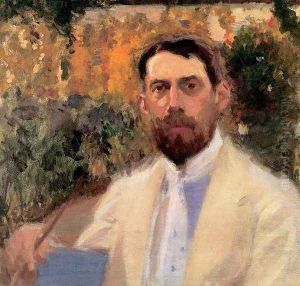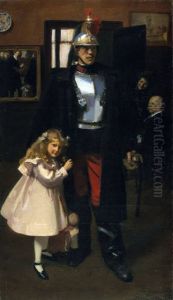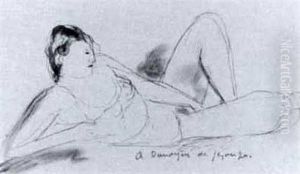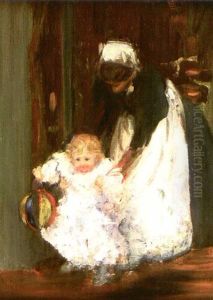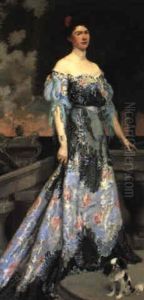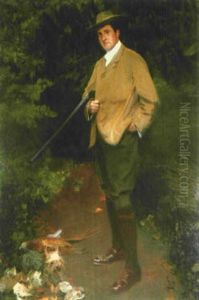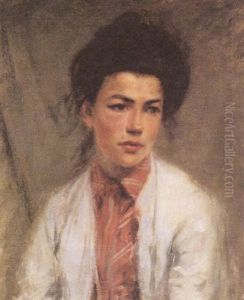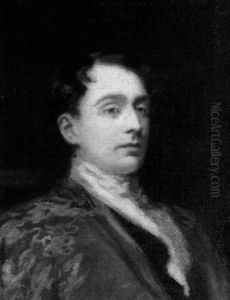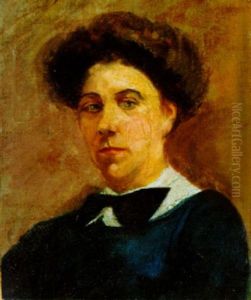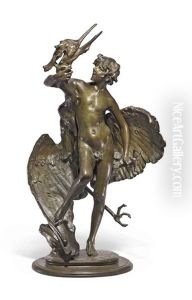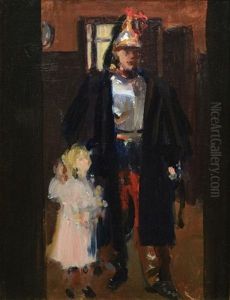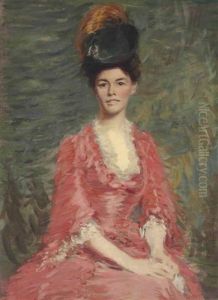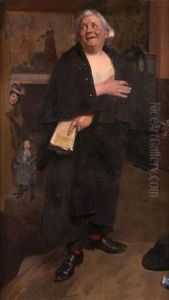Frederick William MacMonnies Paintings
Frederick William MacMonnies was an American sculptor, painter, and teacher, known for his work as one of the leading sculptors of the Beaux-Arts generation in the late 19th and early 20th centuries. He was born on September 28, 1863, in Brooklyn, New York, and displayed an early talent for art that would lead him to a prominent career in the arts.
MacMonnies began his formal artistic education at the National Academy of Design in New York and then at the Art Students League. His prodigious talent soon led him to Paris, which was the center of the art world at the time. There, he studied under the tutelage of French sculptor Jean Alexandre Falguière and came under the influence of Auguste Rodin. MacMonnies served as an assistant to American sculptor Augustus Saint-Gaudens, which provided him with a solid foundation in classical sculpture and the Beaux-Arts style.
Throughout his career, MacMonnies received numerous commissions for public monuments and sculptures, which were well-received both in the United States and abroad. He became known for his ability to work in a variety of sizes and a range of subjects, from grand, heroic statues to more intimate garden sculptures and fountains. One of his most famous works is the Nathan Hale statue, located at City Hall Park in New York City. He also created significant pieces for the 1893 World's Columbian Exposition in Chicago, including the iconic Columbian Fountain.
In addition to his sculptural work, MacMonnies was an accomplished painter, although his reputation in this field is somewhat overshadowed by his sculptural achievements. He painted portraits, landscapes, and historical scenes with a keen sense of light and color, reflecting the influence of the Impressionist movement.
MacMonnies lived and worked for many years in France, where he owned a studio in Giverny, not far from the home of Claude Monet. His presence in Giverny established him as a central figure in the American expatriate artist community there. He also maintained ties to the United States, frequently traveling back and forth for commissions and exhibitions.
Frederick William MacMonnies was awarded numerous honors and medals during his lifetime, and his work was collected by major museums and private collectors. He continued to be productive in his later years, although his style became somewhat less fashionable with the advent of modernism. MacMonnies died on March 22, 1937, in New York City. His legacy is preserved in the many sculptures and paintings that remain on display in museums and public spaces, as well as in the influence he had on a generation of artists and sculptors.
